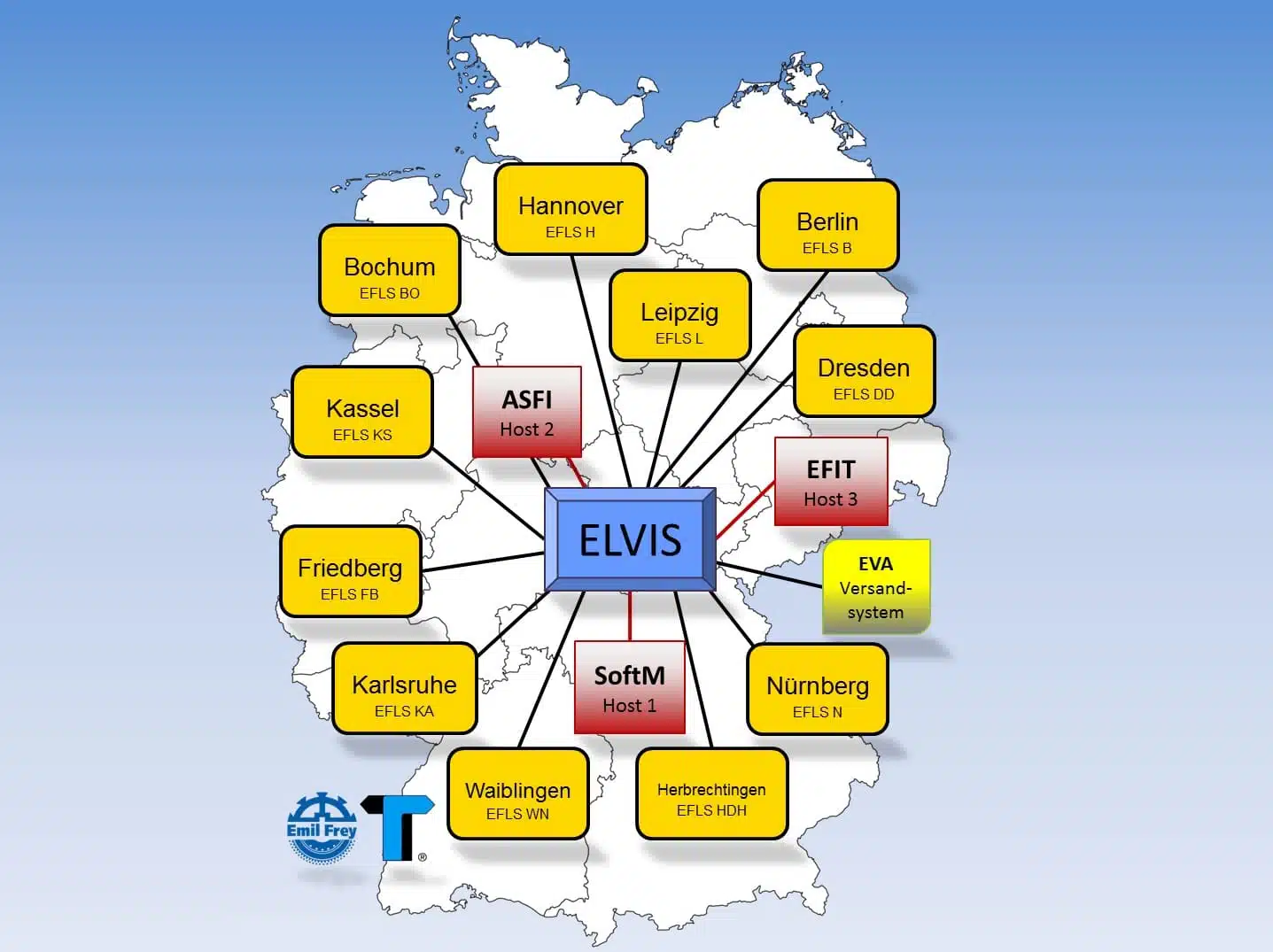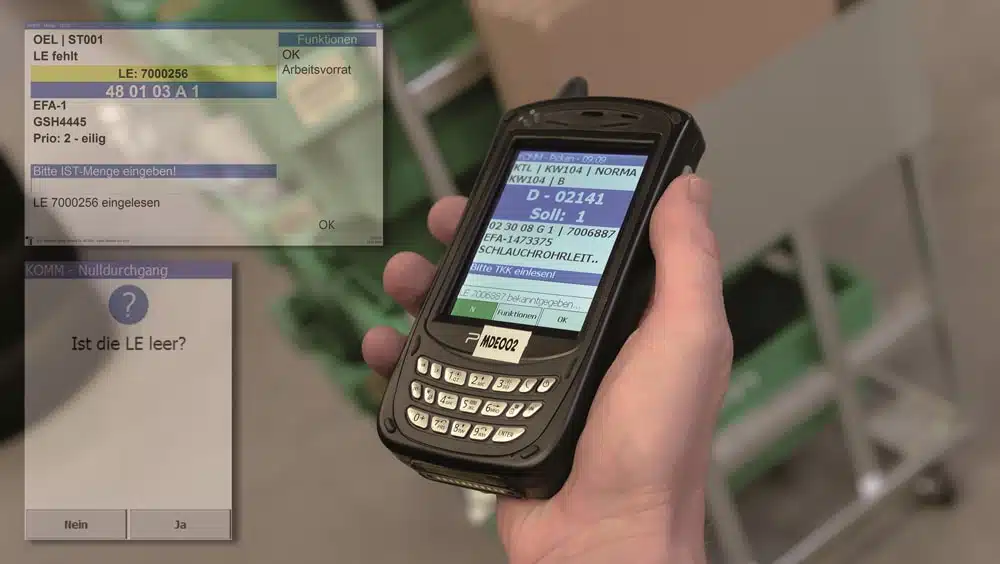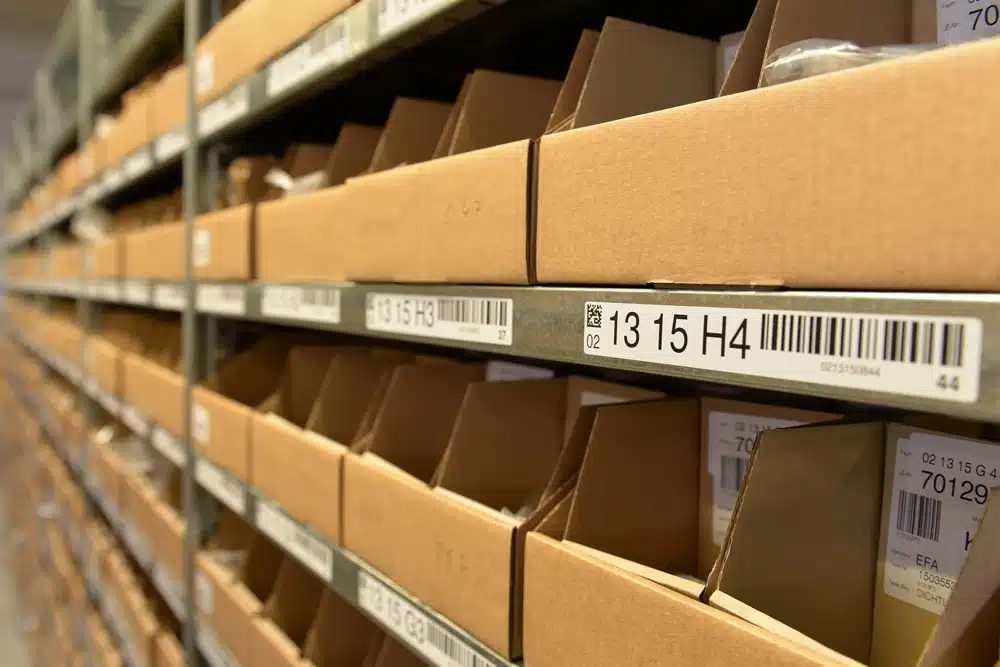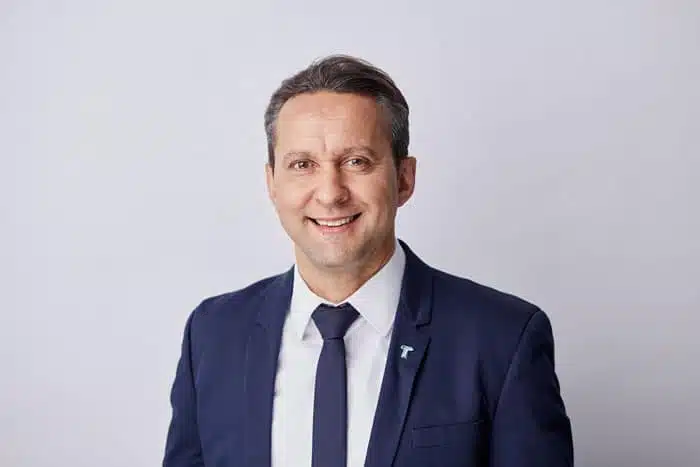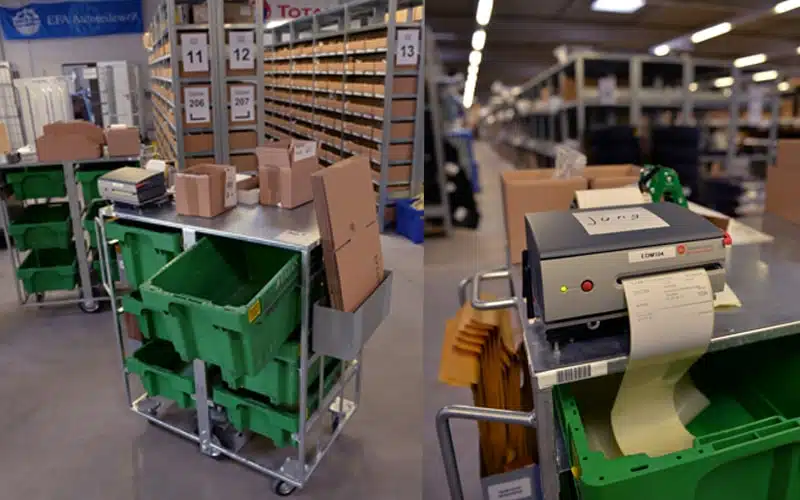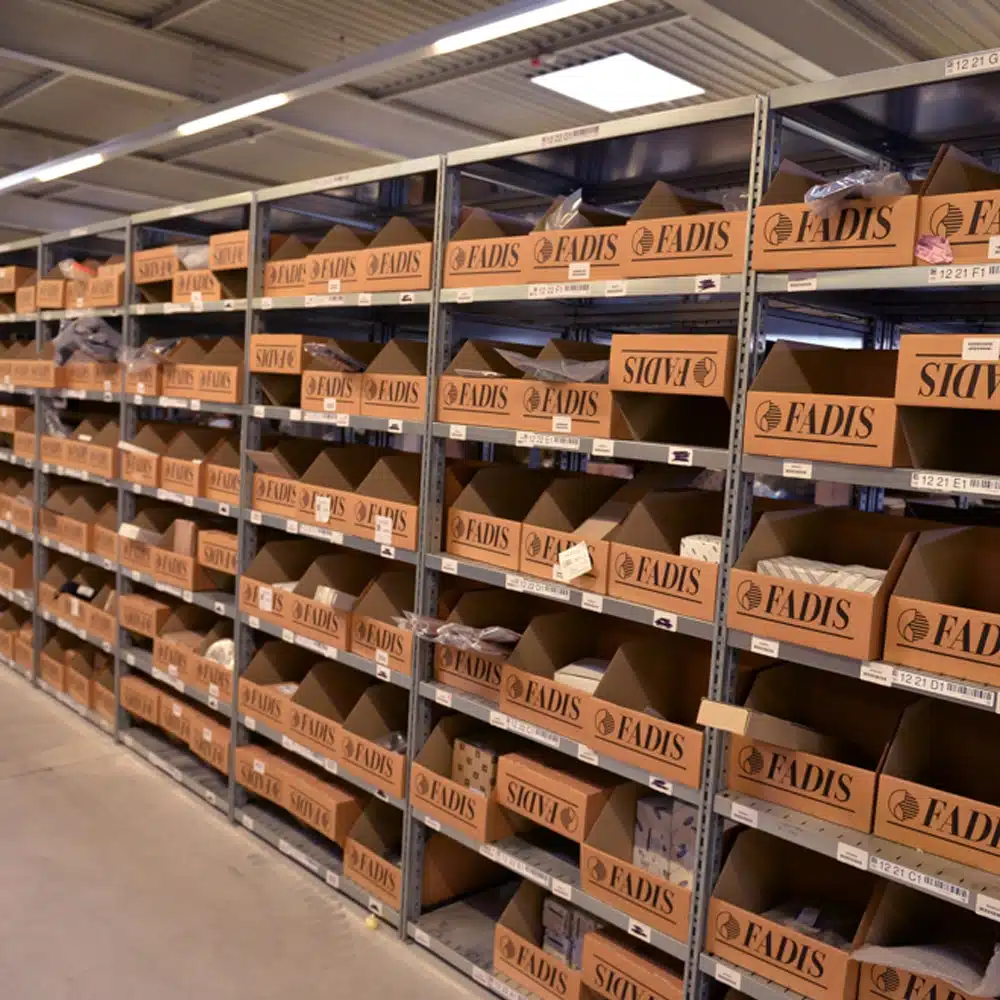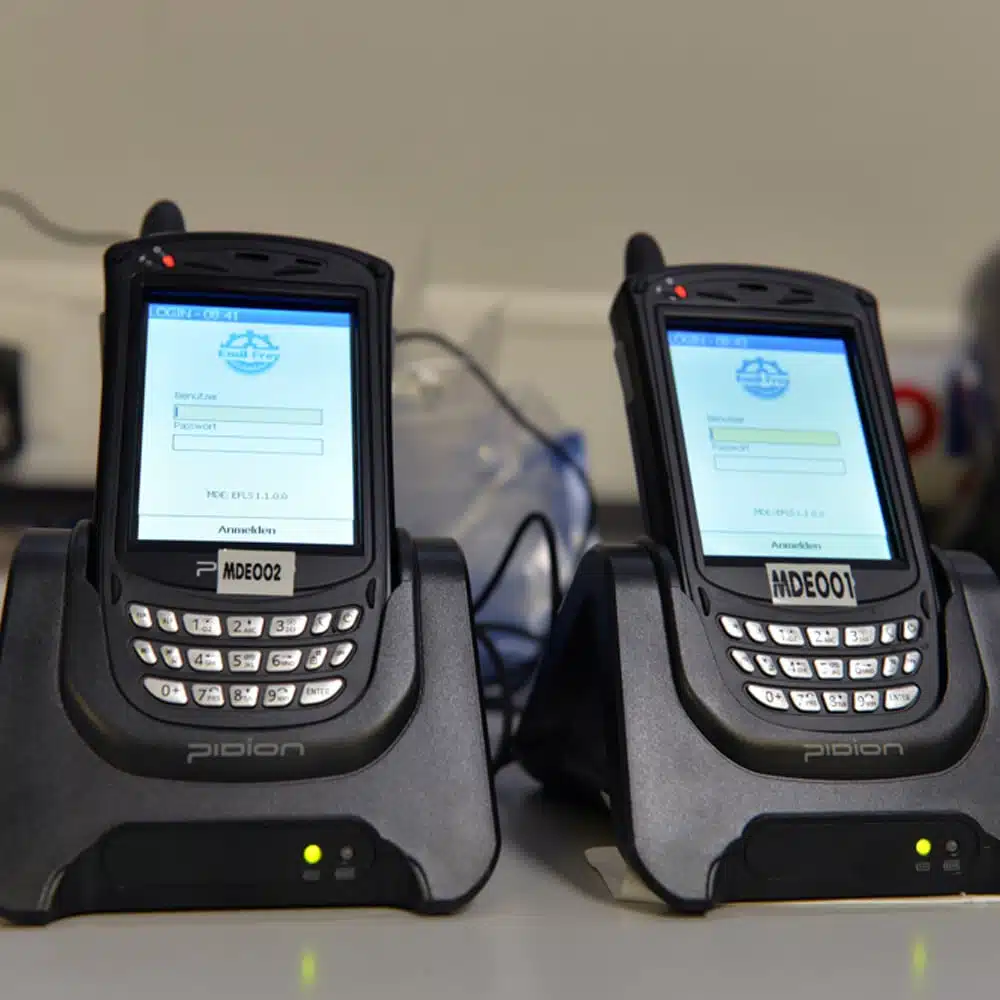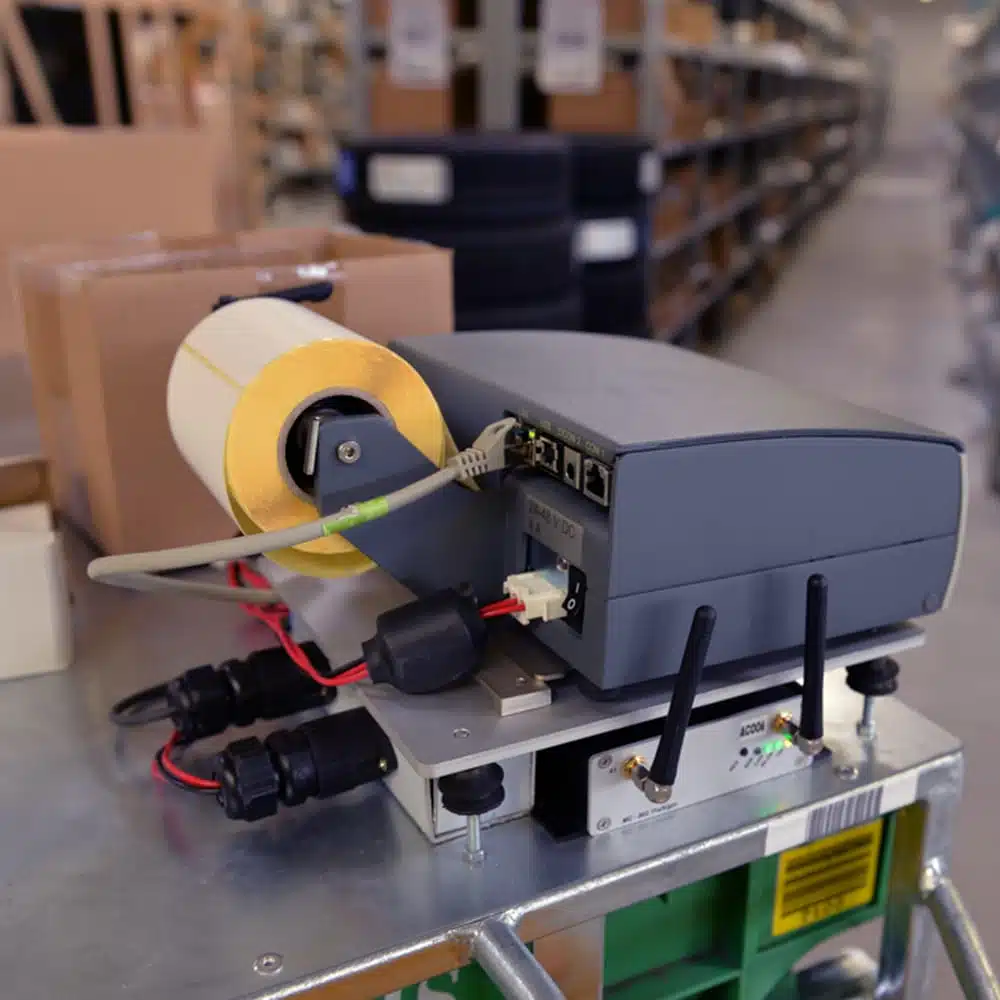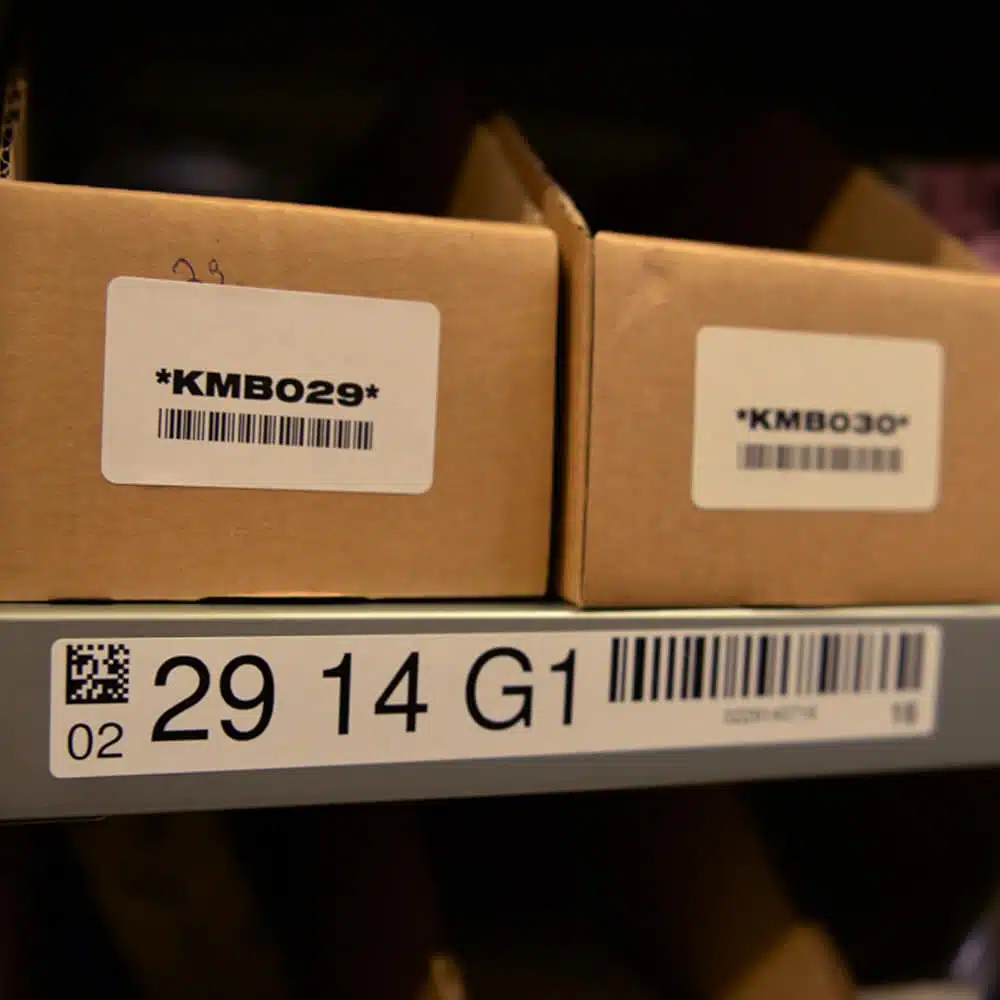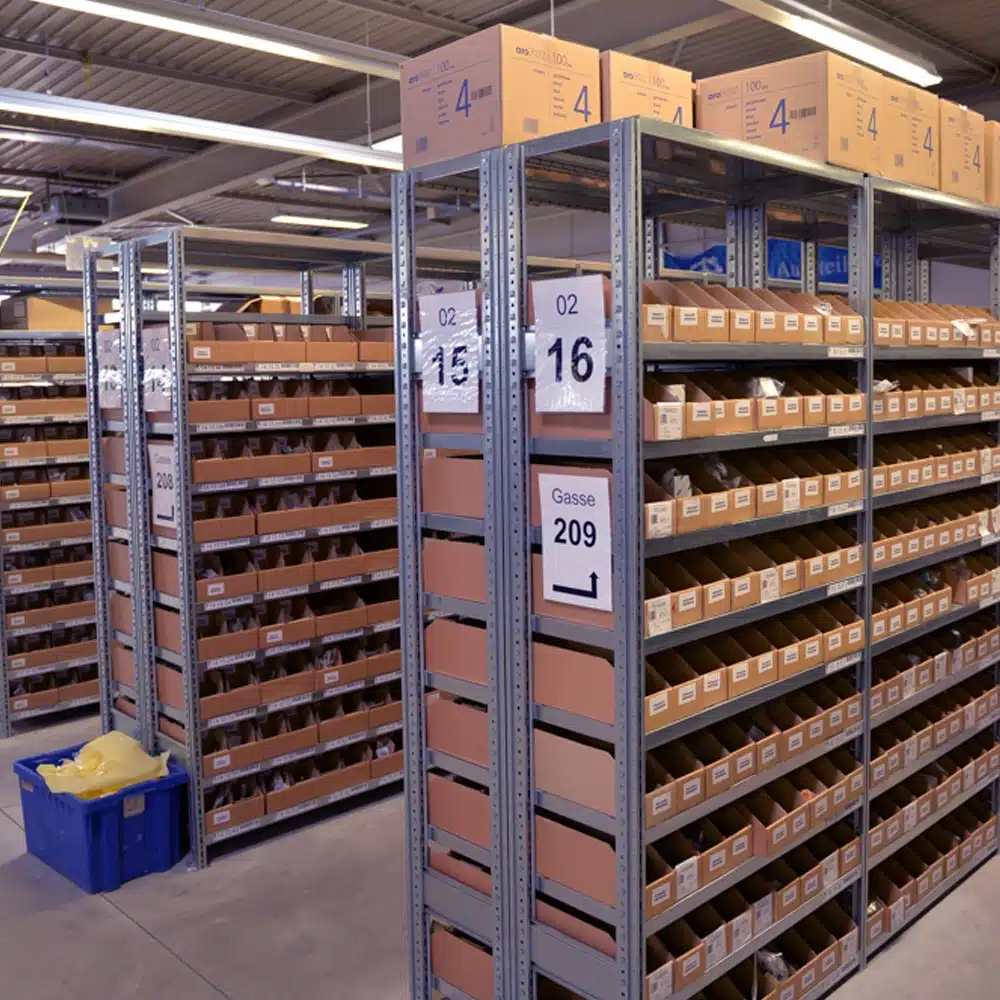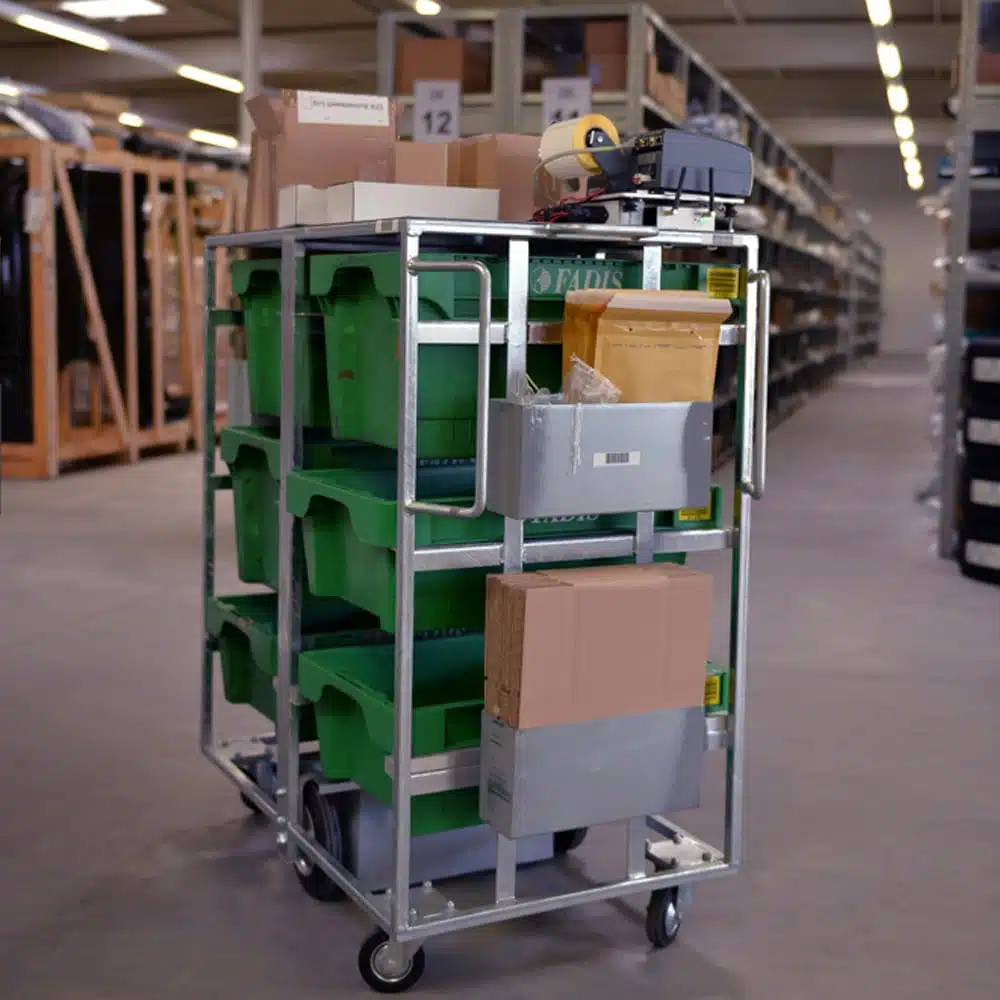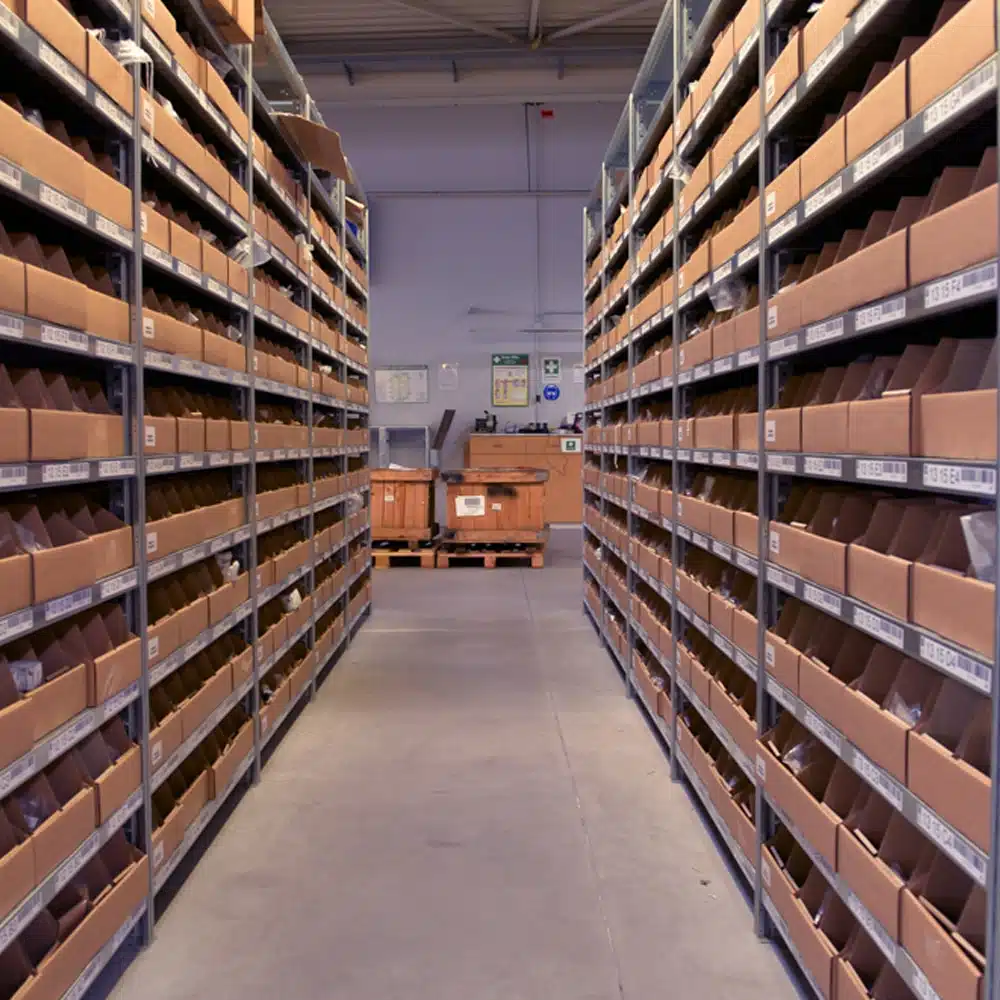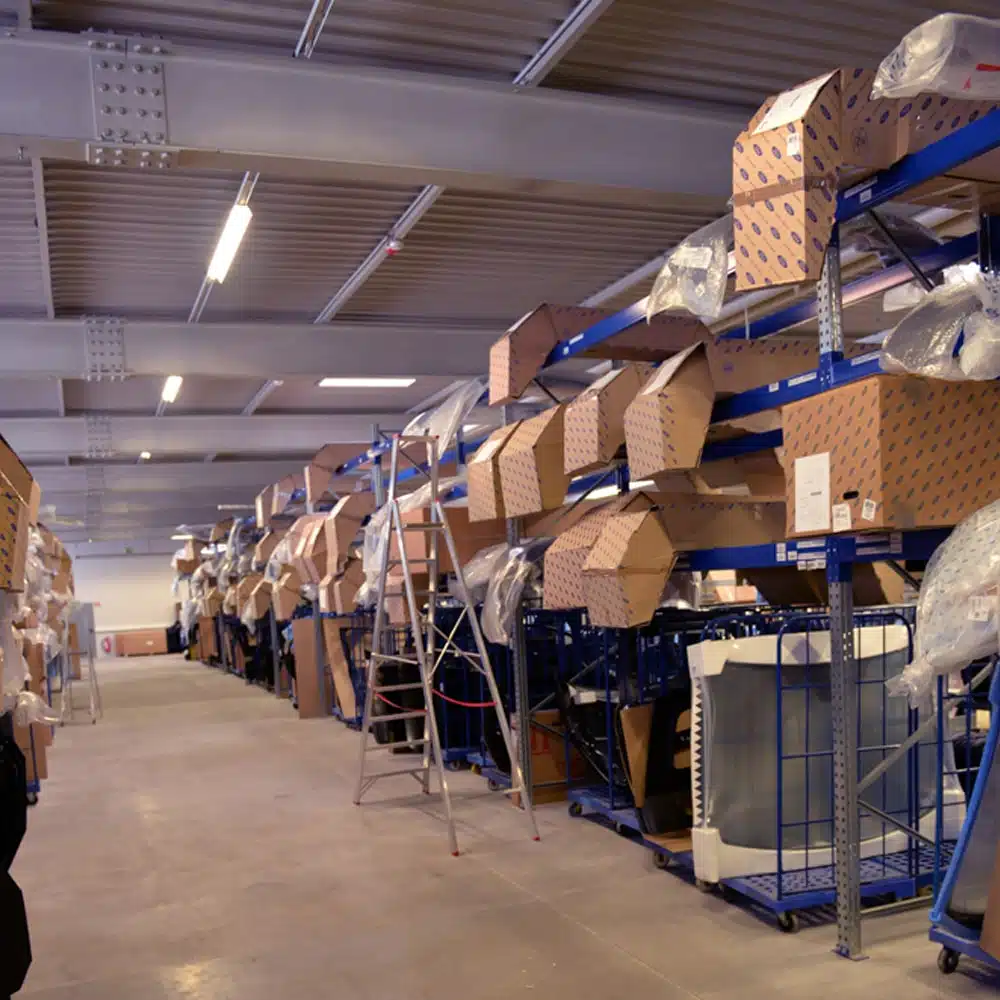TUP has designed a comprehensive logistics system (EFLS) for EF-Logistik, which will be implemented successively at short intervals in all eleven logistics centers throughout Germany. The new EFLS flexibly and dynamically performs both global data management across all locations and the complete autonomous administration and control of each spare parts center with data records that are as lean as possible. All warehouse locations are coordinated in a central interface, and new clients can be activated in the shortest time possible.
Author: Reinhard Irrgang
Emil Frey Group – TUP image gallery at the end of the article.
The logistics system, which will be deployed at a total of eleven locations of EF-Logistik GmbH, a company of the Emil Frey Group Germany, by 2017, is the result of a long-standing cooperation with TUP (TUP). Founded in September 2014, EF-Logistik acts as a specialist for comprehensive logistics solutions in the automotive sector, including wholesale for spare parts and accessories of all well-known car brands, and also offers comprehensive services in the field of logistics.
The logistics system was brought up to the latest requirements status by experts from TUP and EF-Logistik:
The functions and services of the system, which was successfully put into operation on July 1, 2016 at the Karlsruhe spare parts center as the first location, are correspondingly extensive.
The intralogistics functions include the electronic delivery notification of goods receipt and returns, the uniform and fast formation of storage units (SU) for small and large parts, and the standardized, homogeneous warehouse structure. The warehouse coordinates are equipped with several identifiers at the same time. In addition, the system includes a central transport control system for all terminals such as PDTs and forklift terminals, online picking including online shipping label printing in all picking zones, online stock transfer functions with LE split and online stocktaking.
EF Logistics: Shipping units are formed entirely by the system
The fastest possible processing is ensured by route-based order dispatch on a retailer and postal code basis and the computer-aided formation of shipping units (VE) with area-dependent, order-, article- or quantity-oriented production strategies. As Eduard Wagner, Senior Project Manager and member of the management board at TUP, explains, “the formation of shipping units is left 100 percent to the system to achieve the optimum in each case.” The cut-off time-oriented picking sequence with priority-based override acts as a further “accelerator”.
This means that, in the case of particularly urgent orders, the sequence defined according to pickup times can be broken and time-critical orders can be preferred.
Online worklist and information functions in the picking zone, the so-called “PDT hotkeys” and the central logistics control center with information about the work progress by tours, clients and zones ensure permanent transparency.
Three hosts are connected to the EFLS
For external logistics, the system provides, among other things, multi-client data management for parts master, inventories, notifications and orders, and retailer returns recording. Parts inventories are managed separately by physical location and logical qualifications (parts logistics center, QS status, host warehouse). Shipping labels and delivery bill documents are generated and printed via the EFLS, and load-oriented shipment data is transmitted to the shipping system. Information functions, such as stock information, are executed across warehouses.
The logistics system includes a number of specific features: For example, the central ELVIS interface system acts as a data hub for web, DB and TCP services between various host systems, the EFLS logistics centers and ancillary systems. A total of three host systems are connected to the EFLS. One of them is the GATE system developed years ago by TUP, an ERP system for the automotive importer business, which acts as host for some clients.
Rules for individual order pools
In addition to the system-, area- and user group-oriented authorization concept, the order pool assignment – such as lifting platform supply, over-the-counter sales, express pool – via individual sets of rules and the automatic order release are key aspects. Eduard Wagner explains the TUP philosophy on this subject: ” We have the standard that users can work with our systems in a specialized manner for certain topics, but the software only offers a generalist solution approach for this, as for example our order pool processing. Using sets of rules that the users configure themselves, they can create their own order pools and load and process orders in these pools based on specific criteria such as tour times, postal code or customer number.” By now, the client can independently create and edit sets of rules for tasks ranging from goods receipt to goods issue on the basis of very extensive rule sets.
TUP: Generalist software for microsystem solutions
The advantage is significantly increased flexibility, because employees picking online at any position in the center can be informed via the control center to work only for the rush pool, the normal pool or for the ADAC special pool, for example. “This means that a universally valid solution can be used to organize work completely individually and without special software. Because while in the past software was written very specifically for a particular solution, now it tends to be developed in the microsystem solution area,” Wagner emphasizes; “with the great advantage that software is becoming more and more generalistic, but the intended use is becoming more and more flexible.” In this context, TUP’s philosophy holds true: “We don’t want monoliths with process solution character in our software systems, but small solution-oriented processes with problem-solving character.”
Other system specifics include route notification processing via order scheduling with batch specification, direct picking against express notification in goods receipt, configurable order processing strategy – e.g. route-oriented, commercial – in production areas and the so-called “infinite round trip” with dynamic loading of free trolley capacities in small parts picking.
Always optimal utilization of picking capacities
Picking carts with a maximum of six order capacities are used here. After completing a shipping unit, the employee can immediately repack it with the small packing materials carried and deliver it, and the system immediately places the picking of the next shipping unit for this cart after its capacity becomes available.
Cross-docking functions for order processing via the transport network of the parts logistics centers were also generated individually for EFL.
For example, scheduling in the host systems is global: The higher-level host decides in which location the inventory is picked, but not which location takes over delivery to the customer; “this is done in the cross-docking configuration of the lower-level EFLS,” says Wagner. It also decides on the optimal route for delivery in each case.
What special requirements had to be met in implementing the new logistics system? Eduard Wagner mentions here, in addition to the short commissioning times with a maximum time window of a weekend, the host-specific requirements for the interface structures and intralogistics processes, the clear definition of global and local data objects, and both client- and TLZ-dependent, as well as the central uniform software development with local individualization as required.
Unique definition of global and local data objects
The central data center with self-sufficient runtime instances for ELVIS and any number of EFLS, the topology transfer from static fixed space to dynamic free space with simultaneous inventory transfer, and the replacement of existing software modules with the current version of the TUP Warehousing Solution (TUP.WMS) also play a decisive role. The goal here is to “refine processes and make them multi-client and multi-warehouse capable,” Wagner says.
How complex was it to design the necessary masks for the users, for example for picking, scheduling and shipping? As Wagner points out, many years of development in cooperation with EF-Logistik formed a basis for stable intralogistics processes. “The dialog design was already close to optimal. TUP’s standardized NET framework enabled the clean migration of established operational process flows through the current state of client technology for all mobile devices used, so the PDTs and the forklift terminals are all seamlessly integrated.”
Milestone-oriented, iterative project approach
Logistics systems of this kind are very extensive: how did TUP succeed and still succeed in making the system nevertheless manageable, transparent, lean and flexible, also for modifications and extensions? Essential prerequisites for this are the uniform use of TUP’s development tools along an “iterative and milestone-oriented project approach and clear core objectives.” As Wagner explains, it’s a matter of designing “clear goals and “straight paths” in the spirit of the Lean philosophy. About 80 percent of a system can be generated using this approach, “then the 20 percent specifics are bolted on.” The TUP tools are continuously developed along the needs of the development process. The service-oriented architecture of the TWS enables fragmented solutions to problems.
Commissioning of the new logistics system at the spare parts centers in monthly cycles
The system is now being “cloned” and rolled out to eleven EF-Logistik sites across Germany.
The first site in Karlsruhe, which is currently categorized as “manageable” with around 13,000 parts items, went into operation at the beginning of July 2016. Three months later, one of the largest centers is to be converted in Friedberg. Friedberg has more than 100,000 parts items and over 1.5 million inventory items. This process will continue on a monthly basis: The Cloning of data and systems is very well supported by the TUP tools deployed in the project. The key here is working with central software but with local instantiation.
However, the warehouse areas as well as the transport and picking zones are named similarly, so that the up to 300 warehouse staff can orient themselves quickly and reliably, even when working across different locations. In addition, all centers will be re-labeled and will have a data matrix code and two-digit check digits in addition to coordinate labels, making them ready for future infrastructural changes such as the introduction of voice-and-vision picking.
All warehouse locations will be coordinated in a central interface
In general, the required infrastructure will be provided by EFL services in the central data center in Stuttgart; local systems will only exist for the periphery on site. “Challenges are the heterogeneous warehouse structure of the sites, the diversified inventory situations and an individual migration strategy of the topology and inventories tailored to the respective site,” Wagner emphasizes, “but also for this we have created tools that help the colleagues of EF-Logistik to prepare the migration.” All the sites’ warehouses can be coordinated in a central interface. For this purpose, the dialog system allows simultaneous access to all participating systems, provided the user has the appropriate authorizations. Centrally managed data stocks are automatically cloned locally and can be processed autonomously, so that a local EFLS can work self-sufficiently.
ELVIS as a central hub between all systems
Other significant system features include ELVIS’s function as a central data hub between systems. The system is designed as a cross-site dialog system with local and global data insight: It allows very dynamic decisions as to which objects are managed globally, i.e., across sites, and which are managed locally.
In general, the data required for efficient work in the respective parts center is deliberately kept lean. Accordingly, lean, clear, very fast and highly productive handling processes are given.
Depending on their function, employees receive different data insights: The picker automatically receives only the data of the spare parts center to which he is currently assigned; for example, if a regional manager manages three centers, he can start dialogs from all three centers. One of the prerequisites for this flexibility is the central software architecture with decentralized instantiation and independent process management so that the centers are able to work autonomously from each other. In addition, the standardized internal interfaces enable sustainable migration capability to the current state of the art.
Sophisticated intralogistics processes, high productivity, flexible personnel deployment
In summary, EF Logistics’ new solution offers the following main advantages: The use of mature operational intralogistics processes with great speed and high productivity, as well as flexible staff deployment and scaling options due to low training requirements.
A central factor for the parts logistics business in the automotive sector is the simple and fast integration of new clients and host systems through the central ELVIS interface platform. In addition, a high degree of individualization is possible per spare parts center: If required, individual processes can be created for the client that apply to all centers or just one. Also important is the high adaptability of the system to future requirements through sustainable WMS development.
The intensive cooperation between TUP and the Emil Frey Group plays a central role in this demanding project. As Wagner reports, “there is a great deal of trust at EF-Logistik due to more than 20 years of intensive cooperation with TUP on a respectful eye-to-eye level. Those involved in the project work together intensively for a common goal-oriented solution.” In addition, “many colleagues at EF-Logistik are “old hands” and have a wealth of experience in the intralogistics process of spare parts supply.” As he emphasizes, “the focus is on the highly satisfied end consumer, whose expectations must not be disappointed under any circumstances.” As the progress of the large-scale project so far shows, there is no reason to be disappointed.
The article also appeared on MM-Logistik in German.
